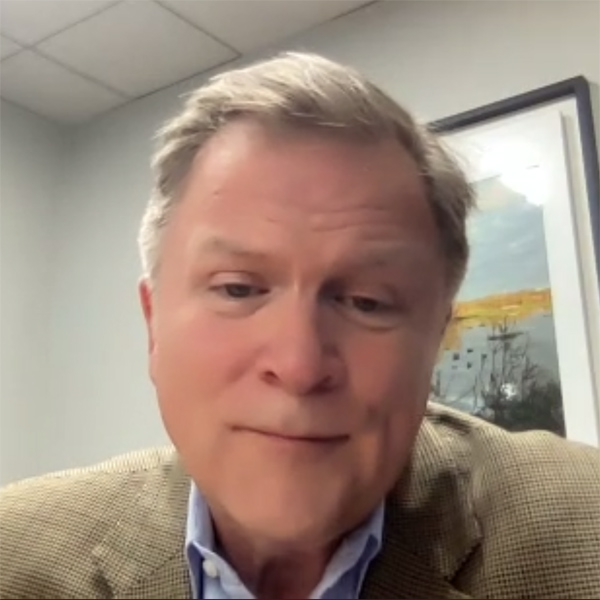
The decades-long move to competitive wholesale and retail electric markets in the U.S. continues to stir controversy, but the numerous benefits can sway attitudes, several former regulators said.
 Pat Wood, Hunt Energy Network | R Street
Pat Wood, Hunt Energy Network | R StreetThe pace of innovation sped up when monopoly providers were invited to sit down and let others participate, former FERC Chair Pat Wood, now CEO of Hunt Energy Network, said during an R Street Institute webinar Tuesday. Wood who led FERC from 2001 to 2005, previously headed up the Public Utility Commission of Texas.
The rules that clarify how technologies play in a market, interconnect and pay for their costs can have a dramatic impact, he said.
“We got in the early days in Texas a humongous slug of brand new gas-fired generation taking advantage of those clear rules and big welcome mats, and then right on their tails were wind and now solar coming here as well as in SPP and MISO,” Wood said. “It’s one thing to have a resource, but it’s another to actually have the investment to capture it and convert it into electricity.”
Unbundling more than a century of energy market structure, as FERC did with natural gas, takes some effort, thoughtfulness and authority, which the commission “had plenty of on the gas side and has considerably less on the power side, but a very dominant role nonetheless,” Wood said.
New Technologies
New technologies from battery storage to aggregated distributed resources have the capacity to provide further benefits to consumers, but the existing framework within the RTOs/ISOs put up artificial barriers that prevented these resources from being compensated for all their attributes, said former FERC Chair Neil Chatterjee, a senior advisor at Hogan Lovells, who served on the commission from 2017 to 2021.
“We had two pretty significant FERC orders during my tenure: FERC Order 841 regarding storage and FERC Order 2222 regarding aggregated DERs. … Some of the most significant actions the commission could have taken to address how to innovate within the market,” Chatterjee said. “We were highly intentional on FERC Order 2222 for some of this innovation to have the opportunity to thrive.”
 Neil Chatterjee, Hogan Lovells | R Street
Neil Chatterjee, Hogan Lovells | R Street“Conservatives love it when new technologies come in and upend existing markets, [such as] when Uber comes in and breaks up the taxi unions. But for some odd reason when it comes to electricity, it’s ‘No, no. This is how we’ve been doing it for 125 years. We have to continue to do it in this manner,’” he said.
Chatterjee called that “an outmoded way of thinking” and expressed optimism that more conservatives — and more conservative states — will “embrace the benefits of free market competition.”
“The southeast did at least take a step in the right direction with [the Southeast Energy Exchange Market] to move towards a market,” he said. “I wish we’d gone farther in the Southeast, but I also understand the reluctance to engage in markets there.” (See Southeast Utilities Defend SEEM Proposal.)
There is interest across the country in looking at market expansion, with $19 million in President Biden’s budget to study RTO participation and its benefits, he said.
“I do want to clarify, ironically, that it’s not necessarily a red state or blue state thing,” Chatterjee said. “FERC could be more muscular in this area, but one of the reasons the commission has not [been] … is that most of the senators on the Senate Energy and Natural Resources Committee, which is the committee that FERC nominees have to go through for confirmation, are now from non-RTO states. That in strange ways had a limiting effect of FERC acting in this regard, because it’s not just Republican senators, there’s Democratic senators who also have some reticence about this.”
Between Extremes
People tend to resist change, and lawmakers and regulators are especially sensitive to changes to electricity markets, Wood said.
Part of the problem is that most of the public, including lawmakers and regulators, think there are two options, either the Texas model of completely deregulated open retail markets or the traditional Florida model with vertically integrated monopolies, said Landon Stevens, former policy advisor at the Arizona Corporation Commission and now director of policy and advocacy at the Conservative Energy Network.
 Landon Stevens, Conservative Energy Network | R Street
Landon Stevens, Conservative Energy Network | R Street“There’s actually a continuum of competition, with policies, regulations and different innovations you can add between those two points,” Stevens said
Some Republicans can convince themselves that “joining the crony capitalism world … is the chamber of commerce way to do things,” Wood said.
Monopolies are antithetical to governance of a free people, but regulators implemented them at the time because they viewed electric power supply as a natural monopoly, he said.
“Regulators shouldn’t be shellacked when they blow the BS meter and say we’re going to change this. But change needs to be gradual because people have contracts based on the old way of doing things,” Wood said. “When people are jumping on the regulators for changing how solar tariffs work or net metering … I don’t like what they’re doing either, but it’s not unfair. They are doing their job; they’re trying to allocate costs based on cost occurrence.”
It is incumbent on states that care about creating customer benefits to perform rate design more correctly, but opponents of that are adept at shaping outcomes, he said
“The status quo is hard as hell to bust,” Wood said.


